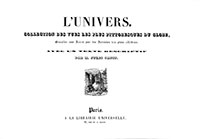
| Home | UIsing | Content | 900 photos | Maps - Engravings | Themes | Persons |
| English | Français |

The port of Cape Town, unsigned engraving
Text and engraving
from the book
This is the name of the southern promontory of Africa, discovered in 1487 by the Portuguese navigator Barthélemi Diaz, and then crossed by Vasco de Gama, who was going to plant the Portuguese standard on the coast of Asia. This land has belonged in turn to Portugal, Holland and England: it is bounded to the west and south by the ocean, and to the east by the Grand-Poisson river and the Caffre country; it is covered by bare mountains; between these mountains lie several waterless and deserted plains. The main rivers on the west coast of this colony are the Elephant River and the Bez River. The Elephant River flows northwards from the foot of the mountain range, while the Bez River rises from the heights of the Darkenstein Valley and flows into St Helena Bay. Table Bay, False Bay and Saldanha Bay are the main bays on this coast. The Cape is located in a temperate climate, where extreme cold and heat are rarely felt. The land cleared by the Dutch is extremely fertile, the countryside is very beautiful and the Company's garden is a delightful spot. The inhabitants of the colony's districts are mainly Dutch, for it was settlers from Holland who first came to Cape Town in 1651; many are also of German origin. From 1680 to 1690, a considerable number of French Protestants, persecuted in their own country, came to settle at the Cape of Good Hope; finally, Sweden and Denmark sent several of their children to this hospitable land. On the other hand, there are very few English, who have remained the masters of this colony since 1814. Winter and spring are the most delightful parts of the year. The city of Cape Town is subject to impetuous winds, which remind it that it was originally called the Cape of Storms. It is an important point for England, because, placed on the route to India and at the end of the African continent, the Cape of Good Hope is the rendezvous for all the ships crossing the Indian Ocean and passing from the Indian Ocean into the Atlantic. Translation from French by Deepp Pro To see details of the port of Cape Town,
|
For more views of the Jules Janin universe, go to his presentation page
![]()
Copyright registration against any commercial use
of the photographs, texts and/or reproductions published on this site
See explanations on the " Accueil " page
| Site Map | Research | Quality | Links | Contact |